
[Title] [text TOC] [image TOC] [Site Search]
 [Donation]
[Donation]

 [Donation]
[Donation]
 |
Hummingbird Bottle Feeder |  |
|---|
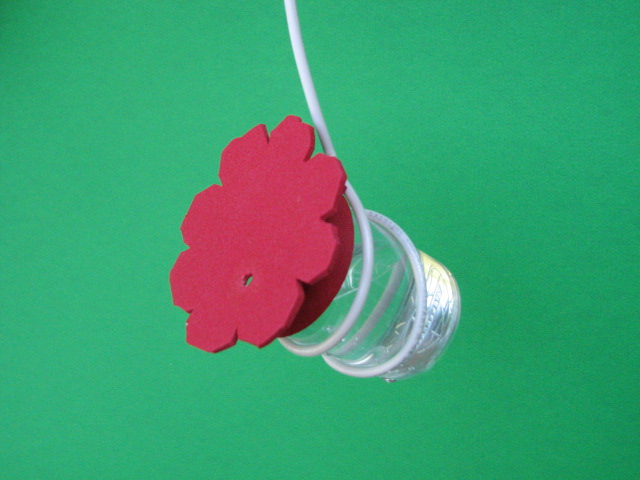
| Materials | Tools |
|---|---|
|
Bottle Copper wire (10 gauge solid core) Red craft foam |
Hole punch Wire cutters Needle nose pliers Hot glue Scissors |
See the Activities section for more instructions, hints and tips.
Here are some more ideas to help you enjoy hummingbirds.
See the hummingbird information page for more information on feeders and making nectar.
Here is another simple feeder that uses a small bottle. You can use almost any kind of bottle. Just walk around a grocery or craft store to see what's available. You’ll want it to be about 1" in diameter and 3” deep. I like the clear plastic ones best. Craft stores have bottles for holding coins that work nicely as well as other bottles. You can also use prescription pill bottles, but be sure you clean them out real good.
Younger children may need help holding the end of the wire in place and bending it. You can use vise grips to help them.
These instructions are for a 1"x3” silver dollar coin bottle found in craft stores. If you have another size, use a string to wrap around the bottle to determine how much wire you need. Use enough wire to go around the container 3 or 4 times and have about 4” left over.
You can add an extra six inches of wire and put a horizontal perch that the hummingbird will appreciate. Or you can wrap some extra wire around the hanger. Just make sure that the perch does not interfere with the hummingbirds getting to the nectar.
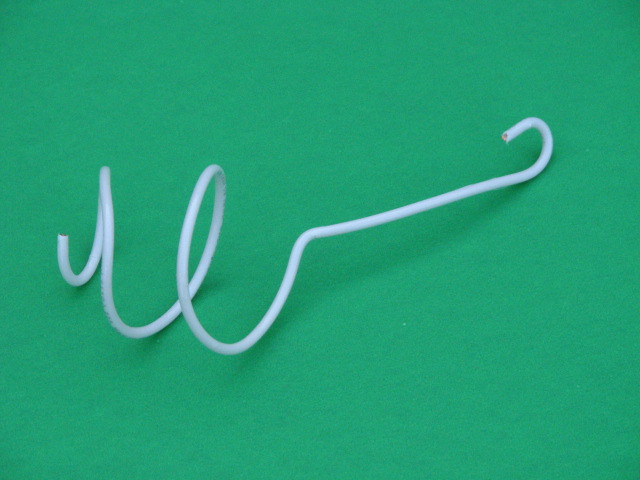
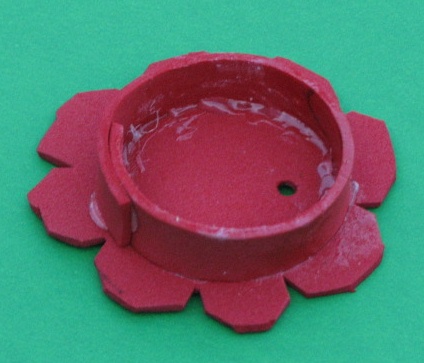
Adjust the hanger so that the bottle hangs at an angle to get the nectar closer to the hole, but not so flat that the nectar drains out.
If you see black mold spots on the flower or cap just throw it away and make another one.
Remember that any type of container can be used, but since hummingbirds can only reach about two inches, it doesn't need to be very deep. You can adapt the wire hanger to fit just about any shape.
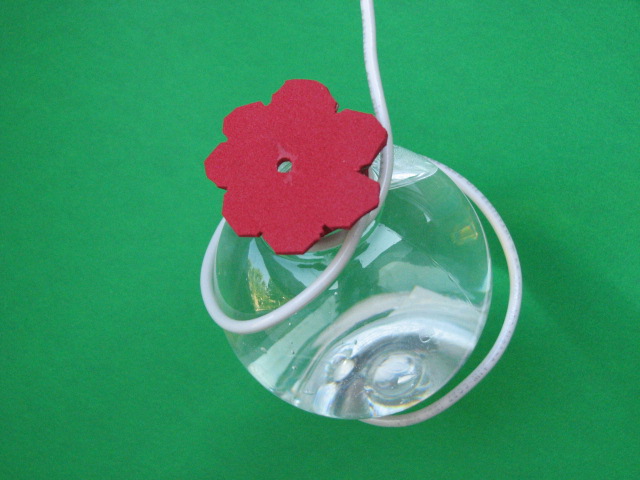 |
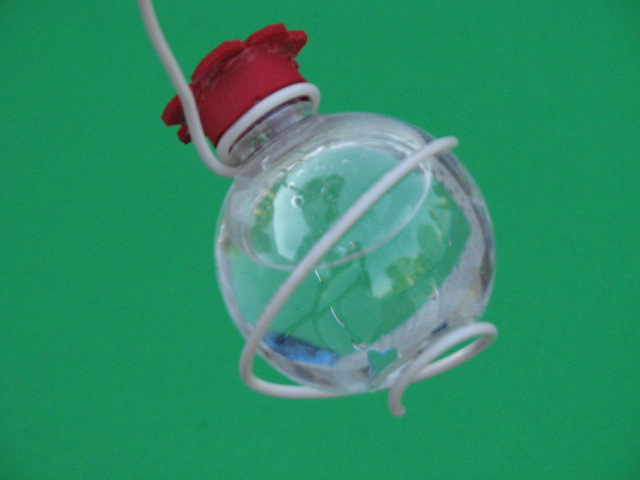 |
The only problem with these feeders is that they are small and require attention every day or two. You may have to place several in your yard to satisfy the needs of all the hummingbirds that visit your yard. Remember they will each drink about half a tablespoon per hummingbird per day.